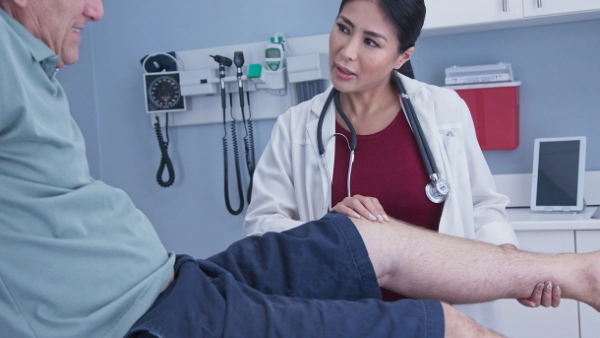Use of bone cement to reduce the individual risk of infection
Joint replacement is one of the most commonly performed surgeries. The benefits of this surgery usually outweigh the risks, but like any other surgery, it carries risks. The patient's individual health and certain risk factors can affect the outcome of the surgery. Immediately after surgery, but even years later, serious complications can occur due to infections. To prevent this, it supports physicians to increasingly consider their patients' medical history.

For effective infection management in joint arthroplasty, Heraeus Medical develops special bone cements and actively supports the scientific exchange of knowledge in this field.
A current development in medicine is personalization. This means that, in addition to a patient's age and pathology, physicians consider predisposition, concomitant diseases and medical history in order to be able to select the right therapeutic approaches on the basis of an individual risk profile. This not only reduces side effects, but also the risk of infections or subsequent damage. In arthroplasty, too, an approach tailored to the individual patient can bring benefits and reduce the risk of infection.
Prostheses and implants of knees or hips have the potential to increase patients' quality of life enormously. But of course, such surgery also carries risks. For example, the risk of infection after initial surgery is up to two percent and rises to about five percent during revision surgery. The German Society for Endoprosthetics points out that infections can occur not only shortly after the operation but also years after the implantation - namely when pathogens spread from the source of infection via the bloodstream to the implant and multiply there. The risk of developing an infection after arthroplasty is particularly high for people with the following factors: Obesity, diabetes, and cardiovascular disease. For this reason, patients' medical history is increasingly being considered before such procedures.
Our contribution: Antibiotic-containing bone cement for knee and hip arthroplasty
One way to anchor implants in the joint is to fix them with bone cement. To reduce the risk of infection, antibiotics can be added to the cement. The active ingredient molecules contained in the cement diffuse out of the cement into the surrounding soft tissue and - depending on the size of the molecule - into the bone. This prevents bacteria and germs from colonizing the cement and the implant. “The implant site is therefore protected from infection without patients having to fear the side effects of an otherwise necessary additional, sometimes high-dose, antibiotic therapy, such as digestive or kidney problems," explains Lothar Kiontke, Head of Marketing at Heraeus Medical. “The special bone cements from Heraeus Medical therefore enable the physician to address the patient's individual risk.”
The topic of infection management in arthroplasty has been gaining in importance for several years. There are yet no uniform global standards for the procedure. In order to expand knowledge in this area and support the development of guidelines on the subject of infection management in arthroplasty, Heraeus Medical continues to research new products and support the scientific exchange of medical professional organizations and committees at national and international level.

